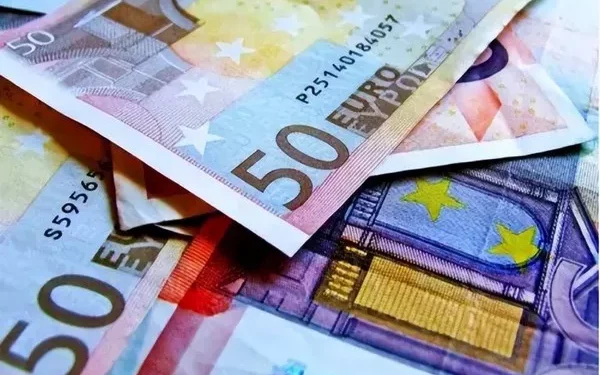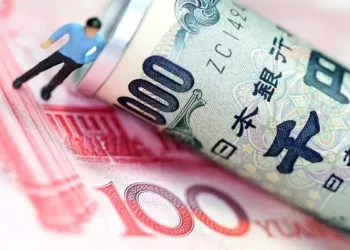In the world of foreign exchange (Forex), currencies can either float freely or be pegged to another currency, with the Euro (EUR) being one of the most important and influential currencies globally. A currency peg is a fixed exchange rate regime where a currency’s value is tied to the value of another, often a major currency like the Euro, U.S. Dollar (USD), or British Pound (GBP). This peg can be a result of government policy or a central bank‘s efforts to maintain economic stability, provide price stability, and control inflation. In this article, we will explore which currencies are pegged to the Euro (EUR), their reasons for doing so, and how the peg affects the economies of those countries.
What is a Currency Peg?
A currency peg refers to the practice where a country’s currency value is directly tied to the value of another currency, a basket of currencies, or even a commodity such as gold. Pegging a currency to another provides stability in exchange rates, which is particularly important for countries that rely heavily on international trade or have unstable economies. When a currency is pegged to the Euro, it means the central bank of the country agrees to buy or sell its currency at a fixed rate relative to the Euro, effectively reducing the volatility in exchange rates.
Currency pegs can be either:
Fixed Peg – The currency is set at a fixed exchange rate to the Euro, and the central bank makes interventions to maintain this rate.
Crawling Peg – The peg is adjusted periodically according to a predetermined schedule or market conditions, allowing for gradual shifts in the exchange rate.
Currency Band – The value of the currency is allowed to fluctuate within a certain band or range around the Euro, providing more flexibility but still keeping it tied to the Euro.
Countries with pegged currencies often experience greater stability in foreign exchange markets, which is why many nations—especially those with smaller economies—choose to peg their currency to a major global currency like the Euro. Pegging can protect these economies from volatility, but it also means they sacrifice some control over their monetary policy.
Why Do Countries Peg Their Currencies to the Euro?
The decision to peg a currency to the Euro is often motivated by a variety of factors, including:
Economic Stability: Pegging to a stable and widely-used currency like the Euro helps countries avoid excessive fluctuations in their exchange rates, which can lead to inflation, instability, and higher costs for international trade. A fixed exchange rate with the Euro helps bring predictability, which is crucial for business planning and long-term investment.
Trade Relations: Many countries that peg their currency to the Euro have close economic ties with the European Union (EU) or the Eurozone. Maintaining a stable exchange rate with the Euro makes trade easier and less costly for these countries, as businesses and investors know that the exchange rate will not fluctuate widely.
Inflation Control: Pegging to the Euro can help a country reduce inflation, as it forces the country’s central bank to keep its monetary policy aligned with the European Central Bank (ECB). The ECB’s primary goal is to maintain low and stable inflation across the Eurozone, and countries pegged to the Euro benefit from this commitment to price stability.
Foreign Investment: Currency stability attracts foreign investors. When a country’s currency is pegged to the Euro, it gives investors confidence that they won’t experience significant losses due to currency devaluation. This, in turn, can encourage capital inflows, which is beneficial for developing economies or those looking to attract foreign direct investment (FDI).
Currencies Pegged to the Euro
Several countries, both within the EU and beyond, have chosen to peg their currency to the Euro. These countries are typically small, open economies with a strong need for stability in their exchange rates. Let’s look at some of the notable currencies pegged to the Euro.
1. The CFA Franc (XOF and XAF)
The CFA Franc is used by several African countries and is divided into two regions:
- XOF CFA Franc: Used by 8 West African countries.
- XAF CFA Franc: Used by 6 Central African countries.
These countries have a shared history of colonial ties to France and, as a result, have maintained a fixed exchange rate with the Euro since the creation of the currency. The fixed rate for both the XOF and XAF CFA Francs is approximately 655.957 CFA Francs to 1 Euro. This peg is maintained through the French Treasury, which guarantees the convertibility of the CFA Franc into the Euro at this fixed rate. The countries using the CFA Franc benefit from the stability provided by the peg, but the arrangement has also been the subject of controversy, with critics arguing that it limits the economic sovereignty of these countries.
The countries that use the XOF CFA Franc include:
- Benin
- Burkina Faso
- Ivory Coast
- Mali
- Niger
- Senegal
- Togo
- Guinea-Bissau (this country is in the process of joining the currency union)
The countries that use the XAF CFA Franc include:
- Cameroon
- Central African Republic
- Chad
- Republic of the Congo
- Equatorial Guinea
- Gabon
2. Bulgaria – Bulgarian Lev (BGN)
Bulgaria’s currency, the Bulgarian Lev (BGN), has been pegged to the Euro since 1997. Bulgaria adopted the currency peg following the economic crisis of the 1990s, which had caused hyperinflation and instability. By pegging the Lev to the Euro, Bulgaria was able to restore stability to its currency and improve its inflation control. The exchange rate of the Bulgarian Lev is fixed at approximately 1.95583 Lev per Euro.
Although Bulgaria is not yet a member of the Eurozone, the currency peg has helped it meet the requirements for future adoption of the Euro. Bulgaria’s central bank, the Bulgarian National Bank (BNB), maintains the peg and intervenes in the market to ensure that the exchange rate remains stable.
3. Denmark – Danish Krone (DKK)
While Denmark is part of the European Union, it has opted out of the Eurozone and has not adopted the Euro as its currency. Instead, the Danish Krone (DKK) is pegged to the Euro in a narrow band, with the exchange rate being allowed to fluctuate within a range of 2.25% on either side of a central rate. The central rate is approximately 7.4600 DKK per Euro.
Denmark’s decision to peg the Krone to the Euro allows the country to maintain stable trade relations with the EU while retaining control over its own monetary policy. The Danish central bank intervenes in the foreign exchange market as necessary to maintain the peg within the acceptable band.
4. Lithuania – Lithuanian Litas (LTL) (Before Adopting the Euro)
Before Lithuania joined the Eurozone in 2015, it had pegged its currency, the Lithuanian Litas (LTL), to the Euro. The exchange rate was fixed at 3.4528 Litas to 1 Euro. The country had been working towards joining the Eurozone for many years, and the currency peg to the Euro was a critical part of the strategy for maintaining stability and preparing for the eventual adoption of the Euro.
5. The East Caribbean Dollar (XCD)
The East Caribbean Dollar (XCD) is the official currency of the Eastern Caribbean Currency Union (ECCU), a group of 8 countries and territories in the Caribbean. The East Caribbean Dollar is pegged to the U.S. Dollar at a fixed rate of 2.7 XCD to 1 USD. However, in recent years, there has been growing interest in adjusting the peg to the Euro, reflecting the region’s increasing trade relations with the European Union.
The countries using the East Caribbean Dollar include:
- Antigua and Barbuda
- Dominica
- Grenada
- Saint Kitts and Nevis
- Saint Lucia
- Saint Vincent and the Grenadines
- Anguilla
- Montserrat
The Pros and Cons of Pegging to the Euro
Advantages
Exchange Rate Stability: Pegging to the Euro offers a high level of exchange rate stability. This is especially important for countries with smaller economies, where currency fluctuations can have a large impact on trade and investment.
Inflation Control: Countries that peg their currency to the Euro often benefit from low and stable inflation. This is because they are indirectly aligning their monetary policy with the European Central Bank, which is committed to keeping inflation low in the Eurozone.
Promotes Trade: A stable exchange rate with the Euro makes international trade with the EU more predictable. This is beneficial for countries that have significant trade ties with the EU.
Disadvantages
Loss of Monetary Policy Flexibility: Pegging a currency to the Euro means that a country’s central bank loses some control over its own monetary policy. The country must align its interest rates and inflation targets with the ECB, even if this is not always in the best interest of the country’s economy.
Risk of Speculative Attacks: If investors believe that the currency is overvalued or undervalued relative to the Euro, they may engage in speculative attacks, potentially leading to a crisis in the country’s foreign exchange market.
Dependency on the Eurozone Economy: Countries that peg their currency to the Euro are more vulnerable to economic shocks in the Eurozone. If the Eurozone experiences a recession or financial crisis, the countries pegged to the Euro can be affected as well.
Conclusion
The practice of pegging a currency to the Euro has been a key strategy for several countries, particularly those that seek economic stability, control inflation, and promote trade with the Eurozone. While pegging provides several advantages such as exchange rate stability and low inflation, it also involves certain risks and limits a country’s ability to independently adjust its monetary policy. Whether or not a country should peg its currency to the Euro is a decision based on economic conditions, trade relationships, and the overall goals of the nation’s financial policy.
Countries with pegged currencies to the Euro, such as the CFA Franc Zone nations, Bulgaria, Denmark, and others, rely on the stability of the Euro and the credibility of the European Central Bank to maintain a stable macroeconomic environment. The use of a currency peg may evolve over time, especially as countries in the Eurozone continue to face new economic challenges and global changes.
Related Topics:
























